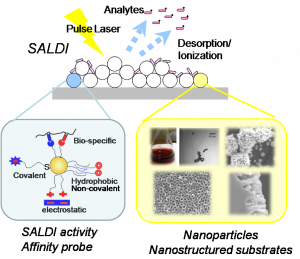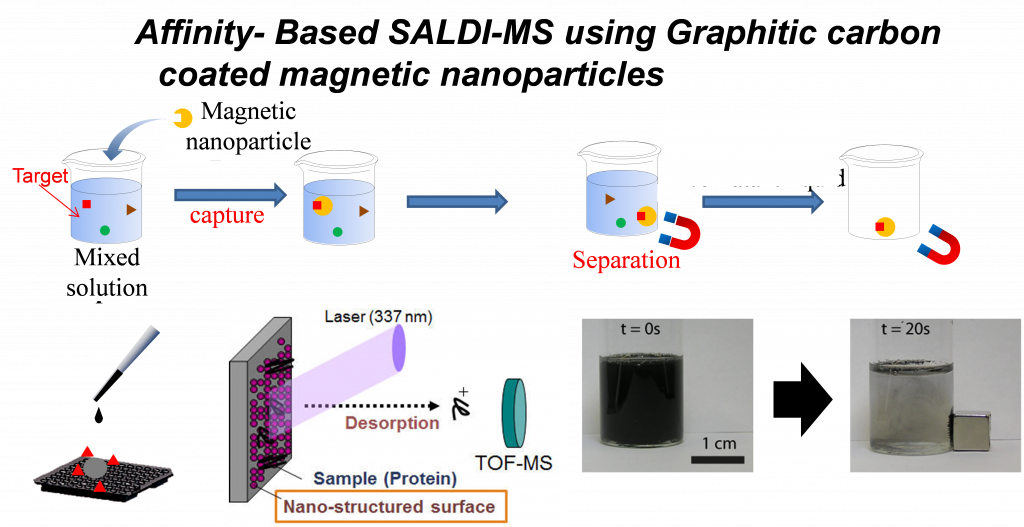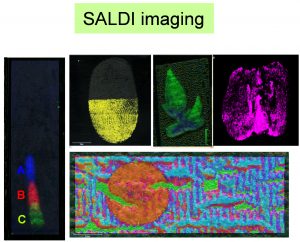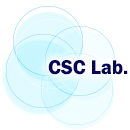 Matrix-assisted laser desorption/ionization mass spectrometry (MALDI-MS) has become a workhorse technique and an indispensable tool in bioanalysis. Despite its success, it is rarely used for the analysis of small molecules (<500 Da) because MALDI mass spectra suffer from high chemical background noise in the low mass region (m/z<500) due to the formation of clusters of matrix ions or matrix degradation products. Surface-assisted laser desorption/ionization mass spectrometry (SALDI-MS) using nanomaterials (inorganic nanoparticles and nanostructured surfaces) has been reported for the LDI-MS analysis of small molecules as an organic matrix-free approach. Compared to MALDI-MS, SALDI-MS affords certain advantages, such as easy sample preparation, low background noise, high salt tolerance, and high throughput analysis for drug discovery. We have developed SALDI-MS method using functionalized nanoparticles, such as platinum-based nanomaterials, layer-by-layer (LBL) self-assembled multilayer films of gold nanoparticles, and magnetic nanoparticles, has been further improved in terms of the detection sensitivity, detection mass range from the low- to the high-mass region, a soft LDI process, the detection of both polar and nonpolar compounds, the selective detection of analytes from a complex mixture using functionalized NPs, and various applications, including imaging mass spectrometry.
Matrix-assisted laser desorption/ionization mass spectrometry (MALDI-MS) has become a workhorse technique and an indispensable tool in bioanalysis. Despite its success, it is rarely used for the analysis of small molecules (<500 Da) because MALDI mass spectra suffer from high chemical background noise in the low mass region (m/z<500) due to the formation of clusters of matrix ions or matrix degradation products. Surface-assisted laser desorption/ionization mass spectrometry (SALDI-MS) using nanomaterials (inorganic nanoparticles and nanostructured surfaces) has been reported for the LDI-MS analysis of small molecules as an organic matrix-free approach. Compared to MALDI-MS, SALDI-MS affords certain advantages, such as easy sample preparation, low background noise, high salt tolerance, and high throughput analysis for drug discovery. We have developed SALDI-MS method using functionalized nanoparticles, such as platinum-based nanomaterials, layer-by-layer (LBL) self-assembled multilayer films of gold nanoparticles, and magnetic nanoparticles, has been further improved in terms of the detection sensitivity, detection mass range from the low- to the high-mass region, a soft LDI process, the detection of both polar and nonpolar compounds, the selective detection of analytes from a complex mixture using functionalized NPs, and various applications, including imaging mass spectrometry.


・Kawasaki et al. J. Phys. Chem C, 111, 16278 (2007).
・Kawasaki et al. Anal. Chem., 80,7524 (2008).
・Kawasaki et al. Anal. Bioanal. Chem., 395, 1423 (2009).
・Kawasaki et al. Chemistry – A European Journal, 16, 10832(2010).
・M. Inuta, et al. Analyst, 136, 1167(2011).
・Kawasaki et al. Anal. Chem., 84, 9268 (2012).
・Nitta et al. J. Phys. Chem. C, 117 , 238(2013).
・Nitta et al. ACS Appl. Mater. Interfaces, 6 , 8387(2014).
・Kurita et al. Analyst, 141, 5835 (2016).
・Kakuta et al, Mass Spectrometry, 11, A0107 (2022).
・Kawasaki et al., Mass Spectrometry, 13, A0162 (2024).
